An acne like inflammatory skin condition, characterised by facial redness, easy flushing, the appearance of small blood vessels and tiny red pimples on the cheeks and chin and an absence of blackheads and white heads. Much about rosacea is unknown; What is known is that the condition is more common in fair skinned people and adults aged 30-50 years, that it may be aggravated by exposure to sunlight, extreme heat, cold or wind, consumption of hot liquids, spicy foods, caffeinated products, alcohol (especially red wine) and stress. Topical steroids may provide temporary relief but aggravate the condition in the long term.
It is thought that rosacea is a disorder of the microbiome of the skin and in particular excess number of mites (Demodex) or bacteria on the skin causing inflammation and flushing.
The appearance can cause significant psychological and social problems, particularly when facial redness and flushing are mistaken as embarrassment or a sign of excess alcohol consumption.
Eye symptoms are common and include dryness, redness and blepharitis





